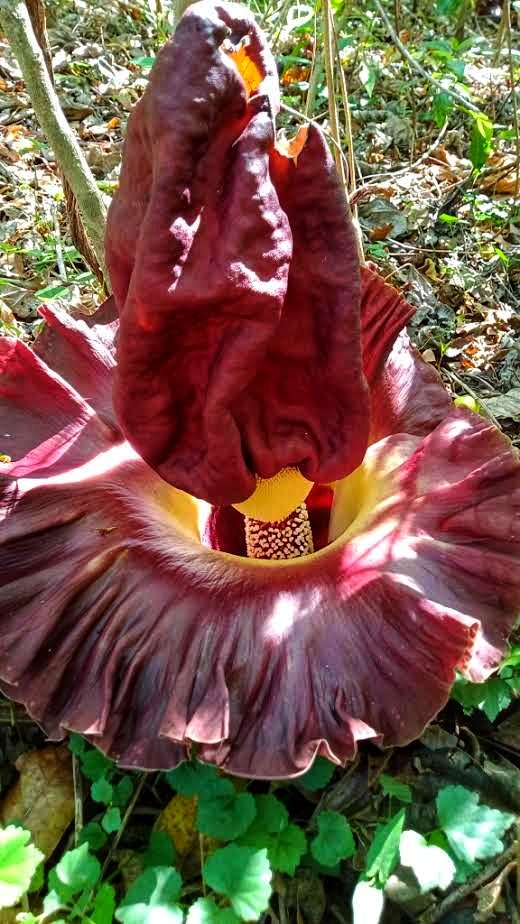
The corpse's flower or locally known here in the Philippines as tigi or pungapung is a stemless perennial plant. Every year, the depressed-globose corm, which can reach a diameter of up to 30 cm, flowers prior to leafing out from the corm from the previous year. The lamina-bearing stem-like structure is nothing more than the petiole, which is a meter or taller and has drastically grown from the corm. The leaves are often solitary, with blades that can reach a diameter of one meter. The blades are trisected, with the final segments being dichotomously separated into oblong to oblong-obovate, acuminate lobes. The spathe is sessile, broadly campanulate, dull-purplish, with up to 30 centimeters of diameter. The edges are wavy, crenulate, and moderately spreading or recurved. The spadix, a spike of flowers enclosed in the spathe, is only slightly longer than the spathe itself. Its ovoid, variable-sulcate or depressed appendage can reach a length of 15 centimeters, and when it blooms, it emits an unpleasant stench.
Common in thickets and secondary forests, along highways, trails, etc., at low and medium altitudes in populated areas, across most or all of the provinces of Mindoro and Luzon. This plant also grows in India through Polynesia and Malaya as well.
Since it has a high production potential, this plant can be marketable, and offers good economic returns with a productivity potential of 59–80 t/ha, it has become a cash crop in several countries.